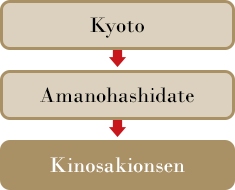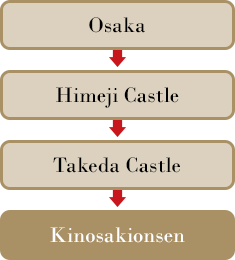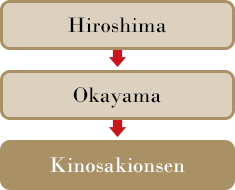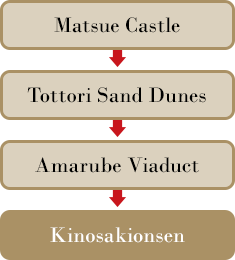The Seven Hot Springs of Kinosaki
The word “onsen” – as in Kinosaki Onsen – means “hot springs”. Kinosaki is known throughout Japan for its long history as a hot spring town, catering to travelers, visitors, and tourists alike. There are many hot springs in Kinosaki, but the most famous are the seven public hot springs. Strolling through the beautiful, timeless and pedestrian-friendly streets of Kinosaki in yukata and sampling the seven famous hot springs is a favorite activity of all visitors to Kinosaki Onsen.
-
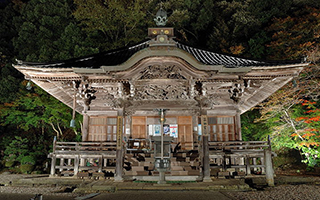
Kinosaki Onsen Temple
- Located at the western edge of town, this temple is dedicated to a Buddhist monk who is said to have prayed for 1000 days to bring forth the spring waters to Kinosaki. In the old days, when the town was first established as an onsen resort, visitors were required to pay a visit to the temple before being admitted to any of the baths in town. The main temple is located midway up the mountain. There is an additional temple dedicated to Yakushi Buddha located at the foot of the mountain.
-
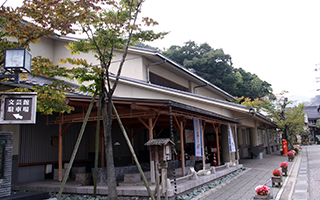
Cultural Center and Museum
- This is a small art and literature museum located along Bunkeikan St. (just one street behind the main street). This museum was constructed in the style of a traditional Japanese house. Inside visitors can view works of poets, authors, artists, and other works by historical Japanese figures. All of the works displayed were influenced and reflect on the town of Kinosaki. Near the entrance of the building visitors can also try to make a simple craft using a traditional craft called mugiwara-zaiku, traditional straw work, original to Kinosaki.
-
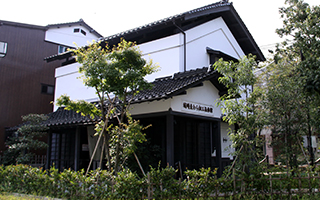
Straw Work Museum
- Kinosaki Straw Work Museum displays pieces of art called mugiwara-zaiku. This is a traditional handicraft unique to this area. The technique uses brightly dyed strips of straw. The straw is then carefully cut and laid out in intricate patterns. These are then used to decorate various items from post cards to traditional Japanese wooden boxes. The museum displays how the craft has been refined to its current level of mastery over a period of about 300 years. Visitors can also learn how to create their own mugiwara-zaiku at the Bungeikan (Cultural Center and Museum).
-
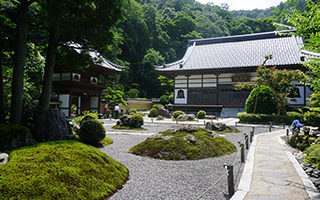
Zazen
- Seated Zen Meditation. Visitors to the temple are welcome to join the monks in meditation. After the meditation you can stay for green tea and snacks. The monk will teach you the proper posture, from how to fold your legs, how far to close your eyes and how to hold your hands.
-
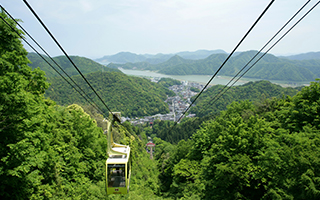
Kinosaki Onsen Ropeway
- Kinosaki Onsen Ropeway located at the edge of the town, opposite of the station. The ropeway provides a slow and scenic ride up the mountain side in its gondola. Some of the best scenes are during the autumn changing of the leaves when the mountain is covered in orange, red, and yellow. At the bottom of the gondola visitors can also boil their own egg in the hot thermal spring waters that spurt from the ground.
-
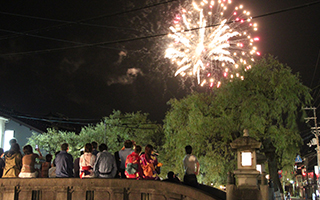
Furusato Festival
- “Furusato” means hometown, so another name for this festival might be, “My Hometown, Kinosaki!” All the usual offerings of Japanese festivals are here, from food and game stalls to entertainment and shows, but the big event is the huge fireworks display in the evening.
-
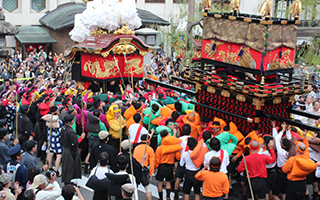
Autumn Danjiri Festival
- The largest and most popular in Kinosaki, this festival is to pray for the good fortune and prosperity of the hot springs. During the day, groups of men carry large danjiri – wooden carts sculpted in the shape of shrines – through the streets of Kinosaki. In the evening, the groups then clash with each other in a kind of ritualistic battle of danjiri, creating a very unique and exciting sight.
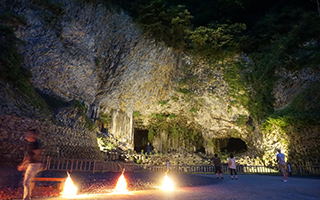
Genbudo Caves
- Genbudo Caves, called so because of the basalt (genbudo in Japanese) rocks that form the five caves. The caves are park of the Geopark. The caves and rock formations are a natural wonder formed by the cooling of lava that spewed from the volcanoes in the area. The rocks were shaped into a network of elongated multiple sided pillars, almost resembling a petrified honeycomb. The caves are located right along side the Maruyama River.
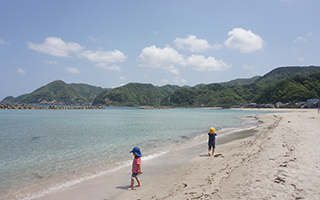
Takeno Beach
- Takeno Beach is one of the most popular white sanded beaches in the area. With its soft sandy beaches and clear blue waters it attracts visitors from all over Japan during the summer months. You can tell that the beach season is soon to start when the locals start setting up their stalls and booths along the beaches, to sell summer time treats to the beach goers.
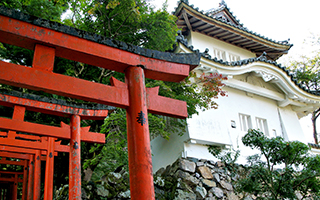
Izushi Castle Town
- Izushi is a castle town that flourished during the Edo era, about 200-300 years ago.
There are several fine displays of traditional architecture found throughout the town, this is why Izushi is designated as a national preservation district of important buildings.
The town is also famous for its own original style of soba, Japanese buckwheat noodles. Approximately 50 soba shops line the town's streets.
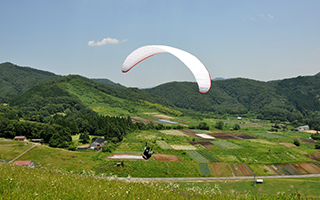
Kannabe Highlands
- Kannabe Highlands is an outdoor recreational area in the mountains of northern Hyogo Prefecture that provide activities year round for the whole family. In the winter the mountains are covered in a blanket of white snow making for excellent snowboarding and skiing runs. There is also a night course. When the slopes aren’t covered in snow visitors still have the option of skiing or snowboarding, or rather grass skiing or grass snowboarding. Other activities include paragliding, camping, river fishing, and many others..







